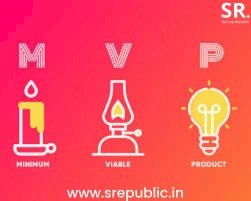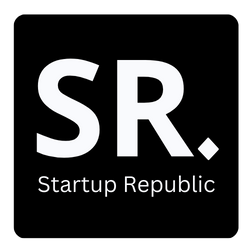The Benefits of Starting Small: Why Every Startup Needs a POC Prototype or MVP
If you're an entrepreneur or thinking about starting a business, then there is no way that you haven't heard of the term "early stage", and most likely, the terms MVP and POC. All these terms mean something different from one another and it can get quite confusing when trying to decide which one will be best for your startup.

In the world of startups, starting small can be a strategic advantage. By embracing the concepts of Proof of Concept (POC), Prototype, and Minimum Viable Product (MVP), entrepreneurs can effectively validate their ideas, minimize risks, and pave the way for future success. Let's explore how these stages can empower startups to make impactful strides toward their goals.
Breaking Down the Differences Between POC, Prototype, and MVP
POC, Prototype, and MVP are three stages of product development. POC stands for Proof of Concept, Prototype is a product that is developed and tested to verify the concept and feasibility of the business model, while MVP stands for Minimum Viable Product.
POC is a testing stage where you test your idea with real customers or investors by getting feedback on your idea. You can use this feedback to validate your idea before moving on to the next stage.
Once you have validated your concept with POC, you move on to Prototype which is a technical build of the product that does not require any further user input such as feedback or testing. The purpose of the prototype is to validate the underlying technology and its ability to meet certain requirements. It’s also used to test out different features and functionality before building an MVP version that has all these features built-in already.
Once you have a successful prototype built out of your MVP (Minimum Viable Product) then you can start marketing it to real users/customers who can give you unbiased feedback about how useful it is for them as well as whether they would buy into it or not
Benefits of Starting Small:
- Mitigating risks: By starting small with a POC, prototype, and MVP, startups can identify and address risks and challenges at an early stage, reducing the chances of costly mistakes later on.
- Saving resources: Starting small allows startups to conserve resources and focus on the essential features and functionalities, ensuring efficient use of time, money, and manpower.
- Iterative improvement: The incremental approach of POC, prototype, and MVP enables startups to learn, iterate, and continuously improve their product based on user feedback and market response.
- Faster time-to-market: By starting small and quickly launching an MVP, startups can gain a competitive edge by entering the market earlier, capturing early adopters, and refining their product based on real-world usage.
Building a Winning MVP: Tools Every Startup Should Know
For startups, a Minimum Viable Product (MVP) is a crucial milestone on the path to success. It's an opportunity to validate ideas, attract early adopters, and secure funding. To effectively build an MVP, startups need to leverage the right tools. Here are essential tools every startup should know to create a winning MVP.
-
Prototyping Tools: Prototyping tools like Sketch, Figma, or Adobe XD allow startups to design interactive and visually appealing user interfaces. These tools enable the creation of wireframes, mockups, and interactive prototypes to validate the user experience and gather valuable feedback.
-
Development Frameworks: Choosing the right development framework can significantly accelerate the MVP development process. Tools such as React Native, Flutter, or Ionic enable startups to build cross-platform mobile applications, saving time and effort in creating separate iOS and Android versions.
-
Cloud Services: Cloud services like Amazon Web Services (AWS), Microsoft Azure, or Google Cloud Platform provide scalable infrastructure and computing power to support the MVP. Leveraging cloud services ensures startups can handle user traffic, store data securely, and easily scale as the user base grows.
-
Analytics and Tracking: Integrating analytics and tracking tools is crucial to measure user behavior, monitoring engagement, and identifying areas for improvement. Tools like Google Analytics, Mixpanel, or Amplitude provide startups with valuable insights into user interactions, conversion rates, and user retention metrics.
-
Customer Feedback and Support: Startups should prioritize gathering customer feedback and offering exceptional support. Tools like Intercom, Zendesk, or Freshdesk allow startups to engage with users, provide timely support, and capture valuable feedback to refine the MVP and enhance the user experience.
Building a winning MVP requires leveraging the right tools at each stage of the development process. Prototyping, development frameworks, cloud services, analytics, customer support, deployment, and experimentation tools are essential to streamline development, gather insights, and deliver an outstanding user experience.
By harnessing the power of these tools, startups can confidently build an MVP that resonates with users, validates their ideas, and sets them on a path to success. Remember, the right tools can make all the difference in creating a compelling market
























